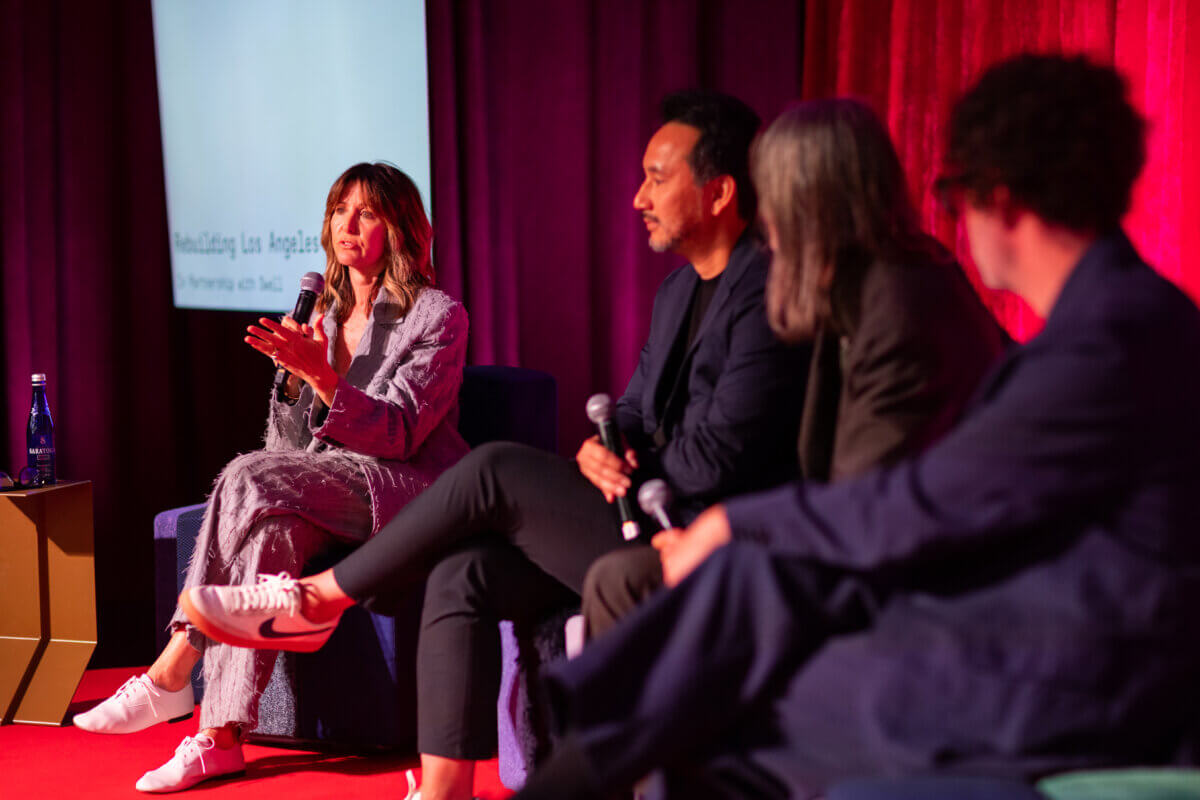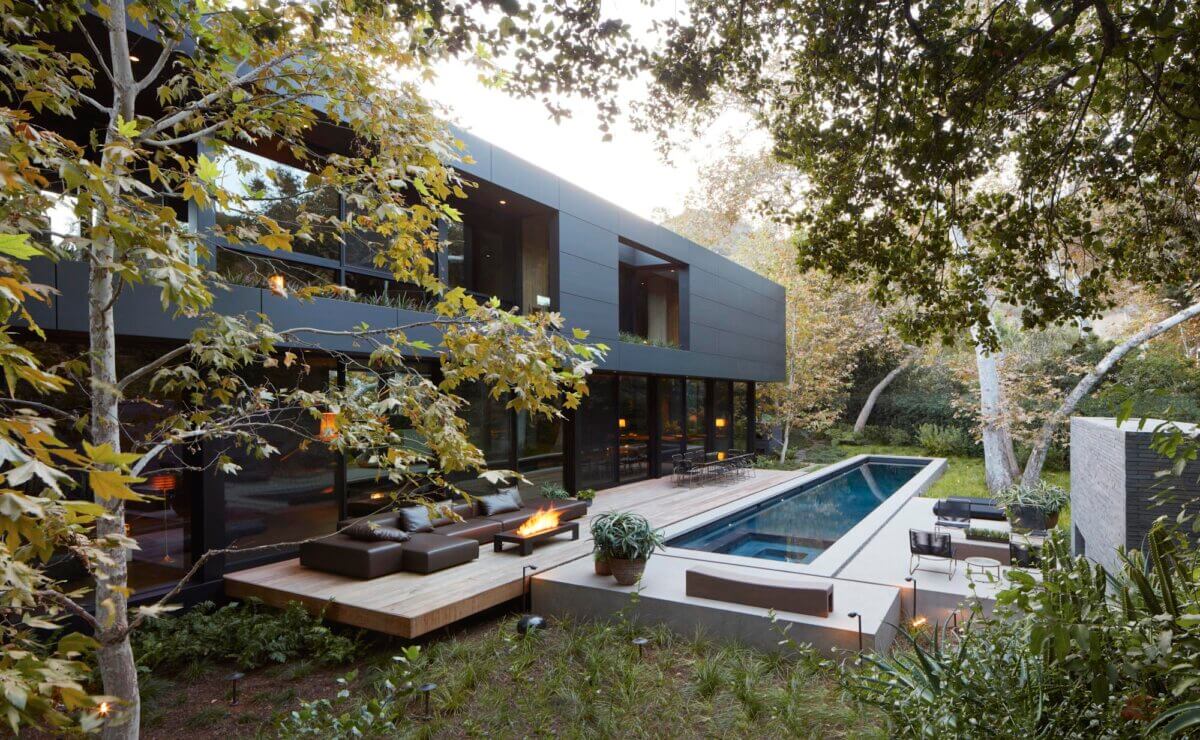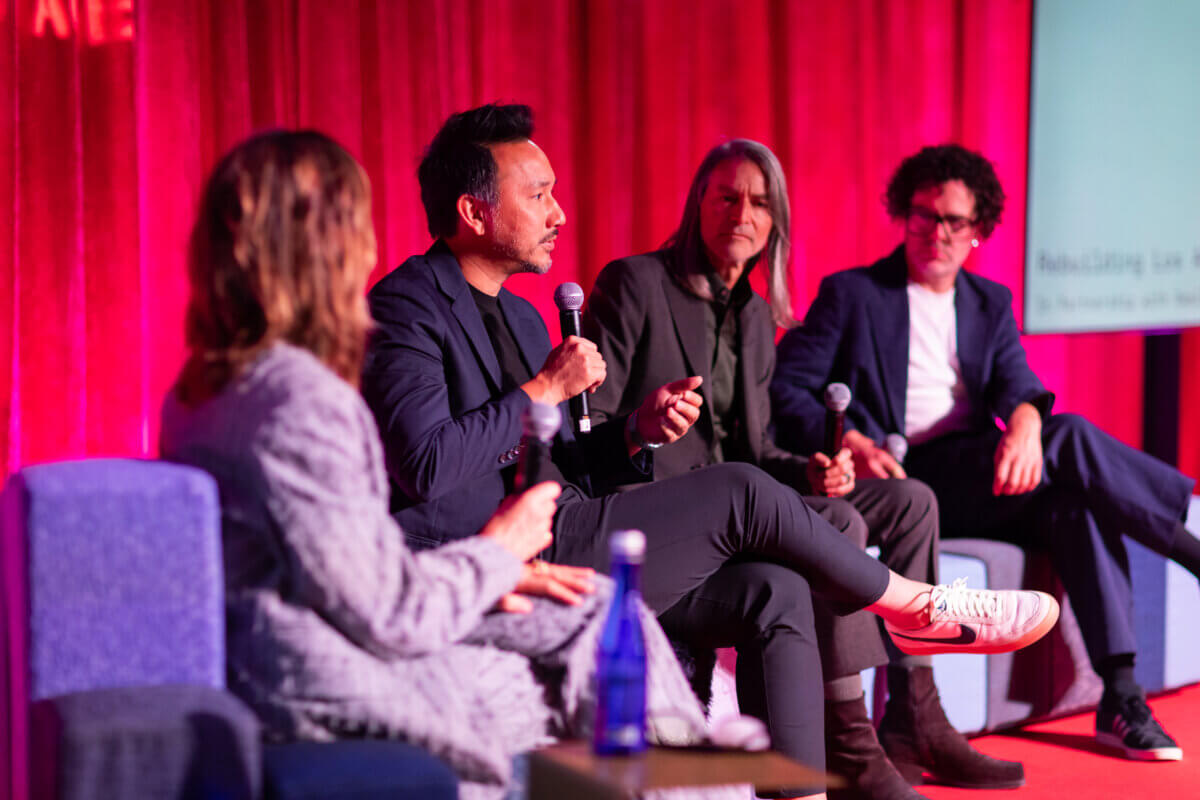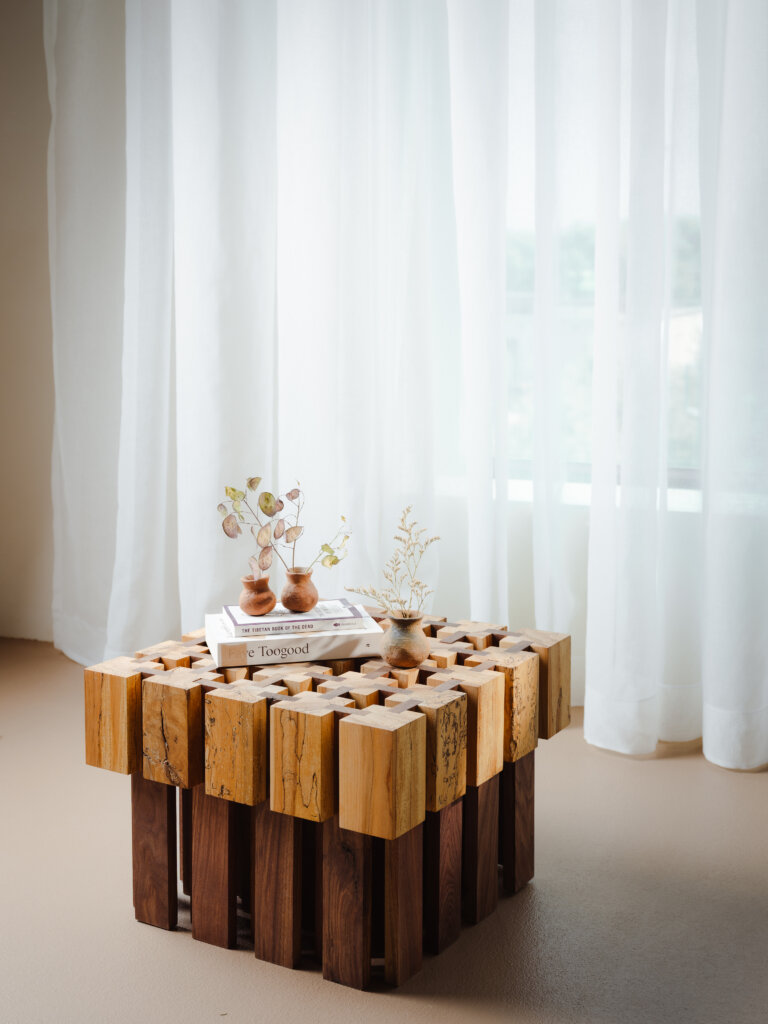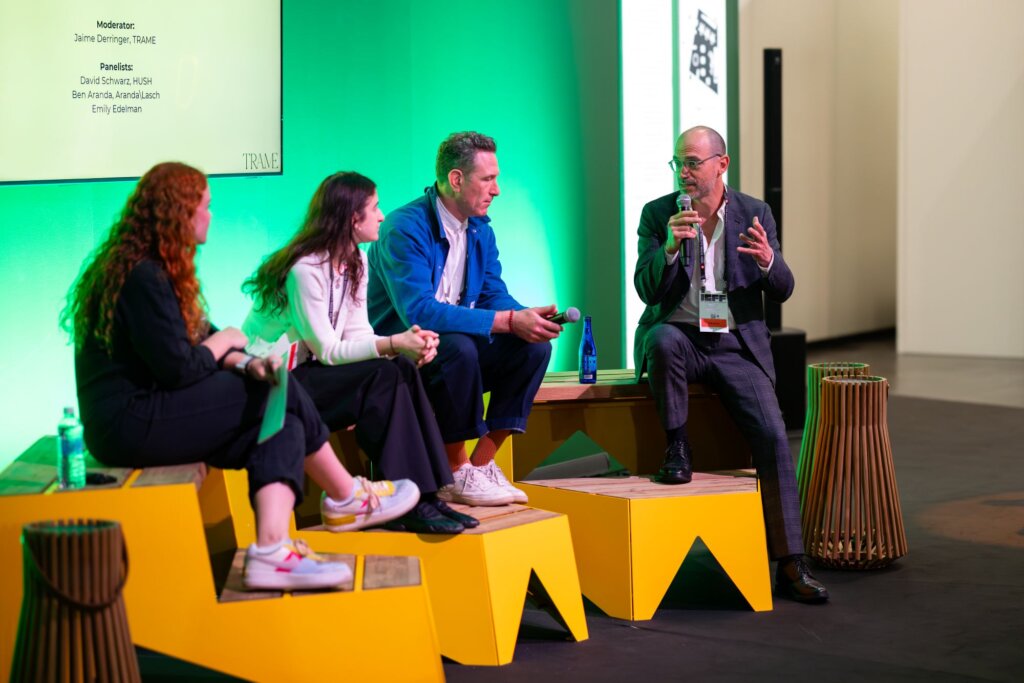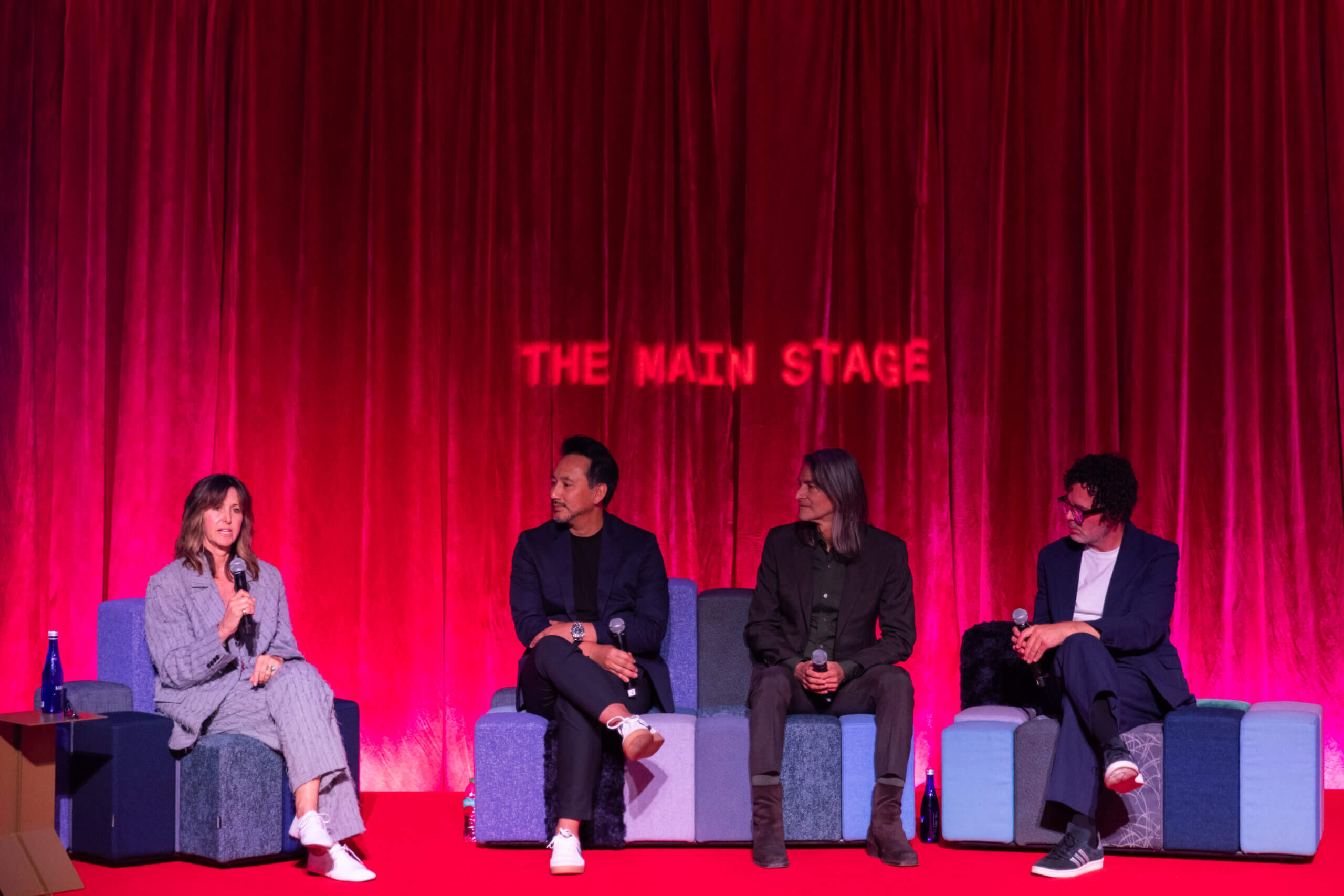
In the wake of devastating wildfires that scorched over 40,000 acres earlier this year, a group of Los Angeles-based designers and architects gathered at ICFF to discuss what comes next—not just for the city’s built environment, but for the people, culture, and identity of LA itself.
The panel featured Ron Radziner of Marmol Radziner, Duan Tran of KAA Design, and Wendy Schwartz of Cuff Studio—each of whom is intimately connected to the areas hardest hit by the fires. The talk was not just a reflection on destruction, but a call to recalibrate how architecture and design can respond to crisis in meaningful, sustainable ways.
This talk was hosted in partnership with Dwell and hosted by William Hanley, Editor in Chief, Dwell
(Image above: From left to right-Wendy Schwartz, Duan Tran, Ron Radziner, William Hanley, photo credit: Jenna Bascom Photography)
Personal Loss, Collective Reckoning
What made this panel so powerful was its grounding in personal experience. Schwartz recounted fires that came dangerously close to her own home in Bel Air, sharing the psychological toll of living in fire-prone terrain: “When it’s dry and windy, I get scared,” she admitted. Her brother lost his home. Radziner, whose own house in Mandeville Canyon was in the evacuation zone, described the surreal mix of fear and awe as firefighters from across the continent flooded into LA.
Their accounts painted a sobering picture: grocery store trips where every fourth customer might be someone who’d lost everything. Neighborhoods transformed overnight. Fires that burned not just structures, but the cultural fabric of entire communities.
Designing Through Grief, Not Just for It
The urge to rush into solutions was met with caution. As Tran put it, “There’s a level of grieving that needs to take place.” People who lost their homes weren’t necessarily looking for prefab packages or quick fixes—they needed time, support, and space to process.
That insight underscores a deeper challenge for architects: rebuilding is not just a technical problem. It’s psychological, emotional, and social. The most valuable work, for now, might be less about blueprints and more about guidance—helping people ask the right questions before giving them answers.
Support Over Spectacle
One recurring theme was skepticism toward premature “solutions” pitched by outside developers—prefab housing concepts and scalable recovery models that look great on paper but ignore the realities on the ground. The panel agreed that these often function more as PR exercises than real responses to crisis.
Instead, Radziner emphasized the importance of staying local and personal. “We’re not cut out to design hundreds of homes,” he said. “But we can provide support.” That means walking people through costs, insurance logistics, and difficult decisions—rebuild, sell, or relocate?
The Looming Threat of Developer Homogenization
There’s no sugarcoating it: the character of neighborhoods like the Palisades and Altadena will change. As Schwartz noted, many of LA’s generational homes—modest, diverse, and rich with history—will be replaced. Some residents may never return, priced out by rising construction costs and slow insurance payouts.
The fear? That spec developers will swoop in to fill the vacuum with what Radziner called “modern farmhouses”—quick, cheap, and soulless. If designers don’t step up with resilient, affordable, design-forward alternatives, that future becomes all but inevitable.
Can Codes Save Us? Maybe.
Building codes in California have improved over the last decade, and the panel was optimistic that new homes would be far more resilient. Still, as Radziner pointed out, many homes that burned didn’t fail structurally—they were lost due to vulnerabilities like venting, crawl spaces, or outdated glazing.
Tran pushed for rethinking how we use the landscape itself—not as filler around the home, but as the first line of defense. Negative space, he argued, can become a tool for fire resilience: fire-resistant plantings, hardscaping, cisterns, and pools as emergency water sources. “It’s about going above and beyond code,” he said. “It’s a design mindset.”
A Call for Cultural Shifts, Not Just Architectural Ones
Part of building smarter is letting go of outdated myths. Eucalyptus trees—common across LA—are dangerously flammable. Yet many homeowners resist replacing them. The panel called for a new embrace of native, fire-resistant flora—oaks, sycamores, gravel landscapes—and a public education push to reset expectations around what “California living” should look like.
“It’s time to rethink the fantasy,” said Schwartz.
What Comes Next
There was some optimism. Radziner floated the idea of a new architectural language emerging from the fires, much like the Case Study Houses once redefined postwar design. But he was blunt about the odds: “The majority will still be developer-driven.”
Still, the designers on stage saw a chance—not just to rebuild homes, but to reimagine Los Angeles. Not through spectacle, but through strategy. Not through saviorism, but through support.
And that, perhaps, is the most important shift of all.
More from ICFF:
ICFF 2025 Highlights: Creativity, Innovation and Connection in NYC
Brand Spotlight: Gantri
